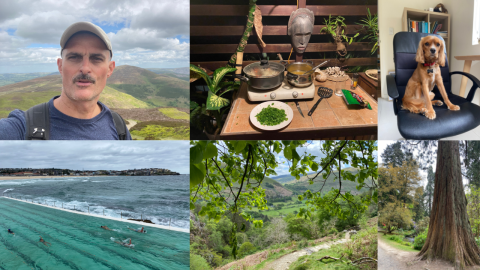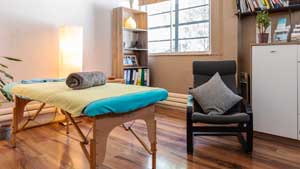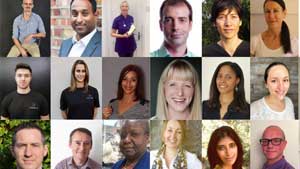
June 2022 newsletter - twenty years of wellbeing
Hi everyone
This month's newsletter is about health, wellbeing and positive ageing.
Twenty years ago, I left my job in finance, threw away my suits and embarked on a journey of meaning finding. This wellbeing journey led to spending time in ashrams in India, learning to be a yoga teacher, practising vipassana meditation in Canada, training to be a physical therapist in Sydney and studying psychology back home in London.
All of this was to understand what makes my body and mind tick. I wanted some answers to some common questions:
- Why did I sometimes feel lonely, bored, sad and dissatisfied?
- What could I do to maintain my energy and vitality?
- What could I do in life to make me feel useful and needed?
- What could I do to feel good in my own skin and not like an imposter?
Over 20 years, a lot of answers have emerged. However, I'm not sure whether that was due to everything I'd studied and taught or simply because the passing of time reveals insights about what's truly important.
In this newsletter, I've set out some of the physical things I do most days; the little habits that build over time to enhance and sustain wellbeing. Next month I'll focus more on the psychological tips and tools. For the last six years, I've lectured in wellbeing and mindfulness at the College of Medicine and Dentistry at James Cook University. This role has made me even more appreciative of the importance of solid research supporting wellbeing tools and practices. Unfortunately, there's a lot of quackery and bullshit out there.
I hope you find some of these ideas helpful and share them with friends and colleagues. And please share with me the things you do that have helped over the years.
As you think about your wellbeing practises, think about this COACH model of wellbeing developed by Daniel Levitin:
- Curiosity - be interested in the world - explore another person's perspective
- Openness - be agile and open to different views and try new things
- Associations - cultivate warmth in your relationships - do some of your wellbeing systems bring you closer to others?
- Conscientiousness - explore tenacity and grit - leaning into suffering and challenges can often lead to the greatest growth
- Healthy practices - Identify the wellbeing systems which sustain you and stick to them
Here are some quotes from the inspiring Daniel Levitin in his book, "The changing mind":
"My business is right here on earth. Trying to be a better person, trying to do things which make other people happy. That's what it's about. This other stuff doesn't mean anything."
Sonny Rollins jazz legend
"Life shrinks or expands in proportion to one's courage."
Anais Nin – French/Cuban American writer
Best wishes
Andy
Gut health – kefir and fibre
The probiotic industry is worth billions and growing. But, in general, forget it. It's a scam.
There is very little robust evidence that these over-the-counter pills are of any benefit. This is a shame because your enteric nervous system (0.5 Billion neurons and containing 100 trillion bacteria - the microbiome) is a pretty important place. For example, 90% of our serotonin is produced in the gut. Serotonin is essential for maintaining a sense of calm and balance. GABA is another vital neurotransmitter which helps us dampen down stress. These are just two of the multitude of neurotransmitters which rely on a healthy diet and a healthy biome.
Eating fibre helps maintain gut health and, therefore, focus on prebiotics rather than probiotics. Reynolds et al., Lancet, (2019)
Prebiotics vs. Probiotics. ... PREBIOTIC FIBER is a non-digestible part of foods such as apples, garlic, asparagus, bananas, mushrooms, honey bananas, onions and garlic, Jerusalem artichoke, the skin of apples, chicory root, beans, and many others.
With this knowledge, I throw a banana, kale and psyllium husks into a blender for a morning smoothie. Doing this helps feed me the best conditions for enabling my biome to do its thing, i.e. feeding my gut to create the neurotransmitters, to build my brain, allowing me to feel calm, centred and upbeat.
The other thing I do is drink some kefir yoghurt (fermented milk). In one of the small handful of studies on probiotics, kefir consumption has a positive impact on mood and the brain's emotional centres - K. Tillisch et al, Gastroenterology, (2013)
Meditate on the breath
Every day I spend 20 minutes focussing my attention on my breath. Each time I notice a thought, feeling or sensation, I note the experience and return my attention to the breath point of focus.
Think of using this technique as a loving survey of yourself. The object is not to be blissfully thought-free or to enjoy a change of conscious experience (although this happens occasionally) but rather to become kinder to yourself and self-accepting of your present experience.
There are many different ways to focus on the breath. For example, focussing your attention on a certain part of your body, such as your abdomen. Whatever you choose to attend to is not the most important thing. What is more important is your relationship with the stories and feelings you experience emerge between you as an observer and your point of focus.
The benefits of this type of practice are robust. For beginners, even just a few minutes of practice can lead to:
• Less amygdala reactivity to stress
• Better ability to focus
• Improved working memory
• Less mind wandering
• Markers for inflammation lessen
• Immune system strengthening
These are state changes in experience, i.e. the benefits accrue when the technique is practised repeatedly. In experienced meditators with 1,000 plus hours of practice, there are trait-like changes which means that they generally become more calm, focussed and balanced in their day-to-day activities.
Great reading - "Altered traits" by Goleman and Davidson
Move with mindfulness (and when you can in nature)
I practise yoga postures most days and walk the dog every day.
Yoga includes dynamic movement, making shapes with my body and breathing with awareness as I create these shapes. It also involves balance, for example, standing on one leg and then shifting to the other.
There are multiple benefits of mindful movement, whether it's yoga, tai chi, boxing, ballet, or hiking in nature, including:
Blood pressure, stress levels, balance, body awareness, muscle tension
Complex movement requires the brain to work hard and strengthen the connection between our five senses, body, and brains. As we age, these connections can wither. I experienced this after multiple covid lockdowns; I went on a hike with a friend in North Queensland and noticed that my normal flexibility, balance and confidence was reduced as I walked across boulders. However, within a few hours, my confidence started returning; my brain and body connections were firing again.
A sedentary lifestyle withers our ability to connect with accuracy to the world using our five senses. It's a case of "use it or lose it." Move around your local environment, take different walks, use your balance and mindfully move your body.
One exercise you can try is balancing on one leg for a minute whilst brushing your teeth and then swap to the other.
Listen to this Michael Mosley podcast to learn more. And for a great read on the science of movement and balance, read "Physical Intelligence" by Scott Grafton. He explores how movement stimulates our creativity and supports our wellbeing.
Exercise for better memory and creativity
Swimming is almost sacred to me. Living in Sydney, I feel blessed to have so many 50m swimming pools close to my home. These include the iconic Icebergs at Bondi to the Harbour Bridge pool.
What's clear from the research is that moderate physical exercise improves memory (1), and creativity (2) and counteracts some age-related memory impairments. And in a large University of Sydney study, people who exercised regularly appeared to undo some of the harmful effects of a poor night's sleep.
What’s also clear is that the exercise doesn’t need to be long and intense. And finding an activity which you do with a friend and your intrinsically motivated to do makes it more likely you will stick to it.
- P.D. Loprinzi, M. K. Edwards, and E. Frith, “Potential avenues for exercise to activate episodic memory related pathways: A narrative review,” European Journal of Neuroscience 46, no.5 (2017)
- Y. Kuo and Y. Y. Yeh, Sensorimotor-conceptual integration in free walking enhances divergent thinking for young and older adults,” Frontiers in Psychology7 (2016): 1580
- S.F. Tsai et al., “Exercise counteracts aging related memory impairment: A potential role for the astrocytic metabolic shuffle,” Frontiers in aging neuroscience 8 (2016): 57



